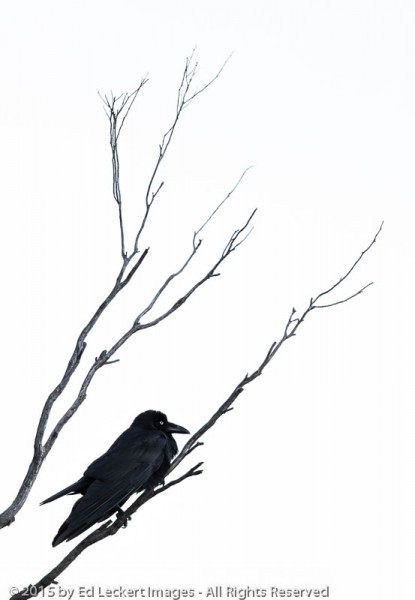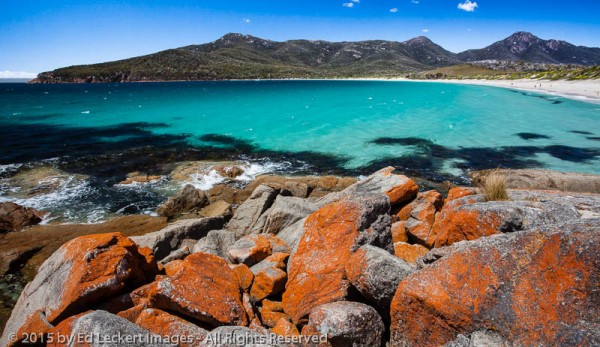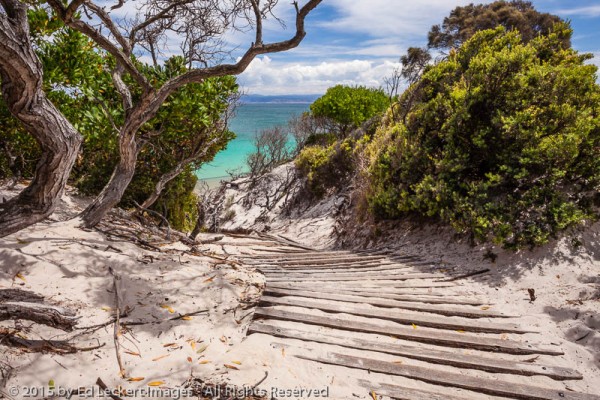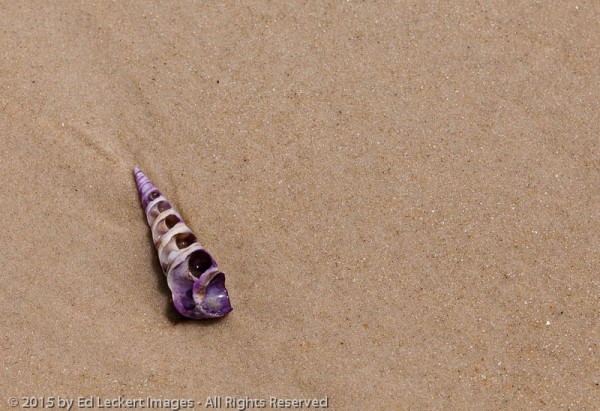


I was having dinner with my good friends Andrew and Kara a couple of months ago, and I asked Kara, “So where are you taking the Polar Star this year?”. As soon as she said “Tasmania”, I knew immediately where I’d be going soon.
You see, Kara is an officer in the United States Coast Guard and is currently assigned to the Coast Guard Heavy Icebreaker CGC Polar Star. While I can’t talk about a mission in progress, I can tell you where the ship has been in the past, and one of those places happens to be Tasmania. I’ve always wanted to go to Tasmania, and meeting my friend and the rest of the crew sounded like a new and exciting way to spend Christmas. I’ll say more about the ship in a future article, but first I want to talk about Tasmania and my adventures there!
First of all, where the devil is Tasmania, anyway? At one time all I knew about it was that it was home to the Tasmanian Devil, the ferocious little beast that was the inspiration for “Taz”, the spinning Warner Bros cartoon character from the 1950s and 60s. Well, Tasmania is an island to the south of Australia’s mainland, and is the smallest of Australia’s six states at just over 35,000 square miles. It lies about 43° South Latitude, putting it about as far south as southern Oregon is north. However, it’s much more isolated than Oregon, and being an island on the edge of the Southern Ocean, it can get some interesting weather.
You can play with the map below, and get directions to Tasmania if you like!
Some of Tasmania’s earliest settlers from Europe were convicts, and we’ll look at Tasmania’s fascinating role as a penal colony in another article. For now I want to focus on its natural beauty, which is one of its finest features. About one-fifth of the island is the Tasmanian Wilderness World Heritage Area which protects one of the last true wilderness regions on Earth. And about forty percent of Tasmania is protected by national parks and preserves. That’s right, 40%! Can you imagine if 40% of your home state or province were set aside for preservation, recreation, and the like? It boggles the mind, doesn’t it?
Now don’t get me wrong, not everyone is happy with this arrangement, but we’re not going to get into the politics of the conservation movement. We’re just going to enjoy the beauty of this island, and there is plenty of beauty to go around. So for the next few weeks, let’s take a tour around the island!
My plan was simple: camp as closely as possible to the most spectacular places in Tasmania. I would car camp as opposed to backpacking for reasons of safety, security, and convenience, but I would still visit the most remote parts of the island reachable by automobile, and I really wasn’t limited much by this approach. When appropriate I would also stay in bunkhouses and hotels, but camping was to be my primary accommodation.
My first campsite was in Freycinet (pronounced fray-sin-ay) National Park on the eastern side of the island. From my campsite it was a short drive to the most popular trailheads of the park. It was here that I had my first encounter with a group of wallabies – and my first encounter with a parking lot full of tourists playing with the wallabies. The tourists and the wallabies were getting along quite well, probably because the wallabies expected to be fed by the tourists. The tourists were taking photos with the wallabies, petting them and getting in selfies with them. The wallabies didn’t seem to mind, but they weren’t that excited about it all, either.
By the way, what exactly is a wallaby, and how do I know they are really wallabies and not, I don’t know, wallaroos or something? Well, wallabies (and wallaroos, for that matter) are macropods, meaning they have really big feet suitable for hopping around. Wallabies come in about 30 different species, but are generally pretty small, about 12 to 20 inches tall and weighing between 10 and 15 pounds. (Wallaroos are larger, and kangaroos even larger still.) The one in the photo above is most likely a Bennetts wallaby, one of Tasmania’s most commonly seen native animals. It could also be a pademelon, otherwise known as a rufous wallaby. All of these animals are marsupials, meaning that the young are born incompletely developed and are typically carried and suckled in a pouch on the mother’s belly. Wallabies live in forest habitats, only coming out in the evening to feed and get hit by cars – more on that subject later.
Anyway, Freycinet NP is home to Wineglass Bay, probably the most photographed location in Tasmania. The bay is lined with a magnificent white sand beach, the water is the most gorgeous color of turquoise, and to top it off, the beach is lined with granite boulders that feature a beautiful bright orange lichen. It’s no wonder photographers love the place!
Wineglass Bay is not the sort of place you drive to, unless you own a boat. To get to the first viewpoint from the trailhead requires about a 45 minute hike over a ridge to a lookout 230 m (750 ft) high. I hiked this section twice, once the afternoon I arrived, and then again on the following morning. On the first evening, I was watching the changing light on the lake when a Tasmanian Raven perched high in a dead tree not too far away. I swapped out my wide angle zoom for a telephoto and photographed this majestic bird while he watched for prey far below.

A Forest raven, or Tasmanian raven, keeps watch on a branch high above Wineglass Bay, in Freycinet National Park, Tasmania, Australia.
To get to the beach requires another 30 minutes or so of hiking down a trail strewn with boulders, a good place to sprain one’s ankle – which is exactly what I did. But it was worth the effort – take a look at my lunch spot!

Devonian Granite is covered in orange lichen on the beach of Wineglass Bay, Freycinet National Park, Tasmania, Australia.
Well, sprained ankle or not, I had to get back to the trailhead, so I opted to stay with my original plan of hiking around the entire Isthmus Track, a somewhat flatter hike than the one via the lookout, even if it did take about five hours to complete the circuit. A couple of hours in I got to a series of planks that acted as stairs down to Hazards Beach, a beautiful beach on the southwest side of the Isthmus Track.

Steps are built into the sand for the descent to Hazards Beach, at Freycinet National Park, Tasmania, Australia.
While walking along this next section I came across the usual collection of shells washed up on the beach, but one in particular caught my eye.

A purple spiral seashell has washed up on the beach in Freycinet National Park, Tasmania, Australia.
I made it back to the trailhead, sprained ankle and all, in time to head back to the tent and cook dinner. While a bit hot during the latter part of the hike, it was a fabulous day to be out in one of the most beautiful places in the world. Who could ask for more?

Great news letter article Ed!
I am looking forward to reading your next one and seeing more pictures.
Looks like you had a great trip.
Did it take a while to get used to driving on the wrong side of the road?
Thanks, Max! Driving on the left was no problem at all. Remembering which side of the car to get into and finding the turn signal lever were huge problems!
Looking at those pictures, I want to go now. Warm sunshine seems ok at the moment.
Right, Dave. You haven’t lived until you’ve celebrated Christmas Day in 36° weather. That’s 36°C, or 96.8°F. Hot!!! But most of the trip it was really pleasant.
Great pictures! I’m heading to Australia later this year – how did you get to Tasmania, and how long did it take? Did you fly or ferry from Melbourne?
Thanks, Eric! When I booked it was a lot cheaper to put together my own itinerary through Brisbane. I flew Hawaiian SEA->HNL->BNE, then stayed in Brisbane and took Virgin Australia to Hobart two days later. On the return I had a huge layover in Brisbane, so I hung out at the airport area mall, Skygate. Flights were 6, 10, and 3 hours going, and about an hour less each returning across the Pacific.